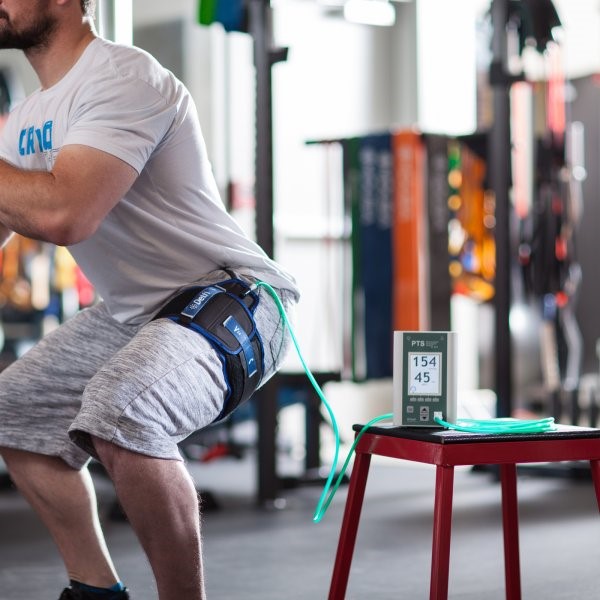Blood Flow Restriction Training
Mar 09, 2021
What is it? This mythology has been around since the 1960’s. Initially starting in Japan and known as KAATSU training. It has progressed in specificity and has gained recognition after more positive research has been conducted. A cuff, similar to a blood pressure cuff, is place on either your arm or your leg depending on which area you are working. The cuff is then pumped up to a specific pressure with the goal of partial occlusion of the blood flow. The patient then performs specific, low-intensity exercises.
Why? The goal is to improve muscular strength and size. Classically to increase muscle hypertrophy and strength you are required to use high-loads. After an injury or surgery these high loads are not recommended and often not tolerated. BFR gives us a way to get the muscle strength needed without the pain or exacerbation that occurs with high-load lifting. Besides increased strength and hypertrophy research has found other potential benefits from BFR training, including:
- Increased bone density
- Faster recovery from surgery
- Improved cardiovascular function
- Improved aerobic capacity
- Enhanced performance
How does it work? By decreasing the amount of blood flow into the muscle the limb becomes hypoxic (lack of oxygen). The body then goes through several adaptations that have been found to be beneficial and result in increased strength. The following mechanisms have been shown to be contributing adaptations from BFR:
- Metabolic Stress- activates hormone release, protein synthesis
- Activation of Myogenic Stem Cells- help with repair and growth
- Release of Growth Hormone and Insulin Growth Factor
- Hypoxia
- Cellular Swelling aka “the pump”
What Types of Injuries Can BFR be used to Treat?
- Soft tissue/Muscle injuries- BFR promotes muscle regeneration and limits scar tissue formation
- Tendons- tendon injuries require a lot of mechanical load to heal. This load can often cause more pain and discomfort. Blood Flow Restriction Training gives us the benefit of high intensity training at a low, more tolerable, load.
- Bone injuries- bone also requires mechanical load to heal but we must be careful to not overload as it may lead to increased injury. Again, with BFR we can provide the mechanical stress at a lower and controlled load.
Our Physical Therapist, Dr. Erin Miller, has been trained in Blood flow restriction training and is incorporating this methodology into her rehabilitation treatment. Contact us to schedule an appointment today!
Category: Physical Therapy
